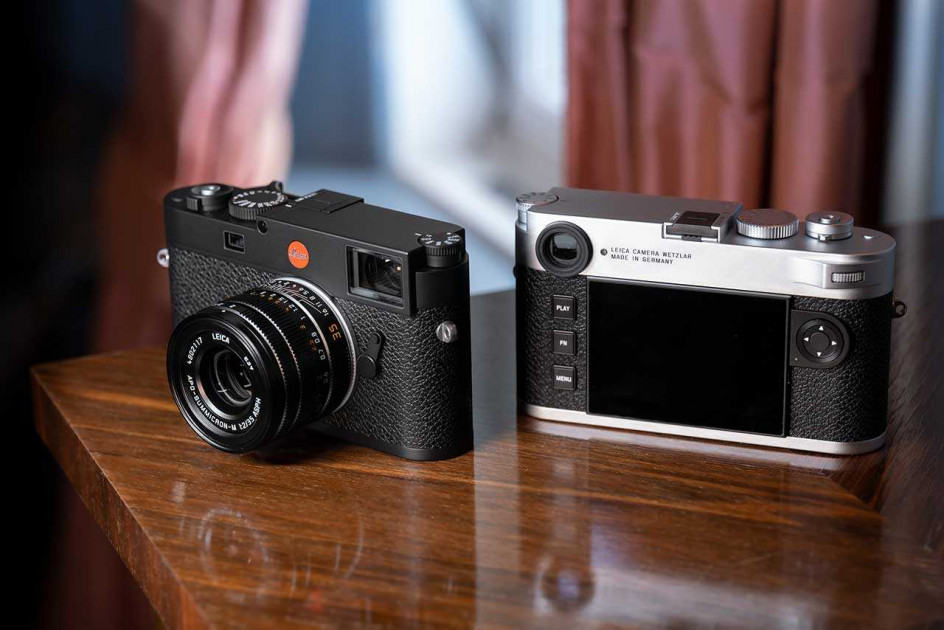Ralph Gibson has long been considered one of the most significant still life photographers of his generation. His clear and precise imagery is quite unique. Last year, the photographer (born in 1939) was inducted into the Leica Hall of Fame.
As an experienced Leica photographer, Gibson was one of the first to be given the opportunity to try out the new Leica M11. He has been working with different Leica cameras for over six decades, experimenting with new models over the years, and ultimately moving with Leica from analogue to digital technology – at first, sceptically; later, effortlessly. So, it made sense to get one of the first M11 cameras to him, and ask him to share his experience with us. The package arrived in New York a couple of months ago, and Gibson remembers the moment very clearly: “I was so pleased to receive the Leica type M11. The morning it arrived, as I was unpacking it, my wife Mary Jane said: ‘Your work always changes when you get a new camera…’”
Her comment is actually surprising, because, when we look at the broad range of Gibson’s work, stretching over decades, his typical visual language is always recognisable. On the other hand, his wife is significantly closer to the production process, and is in the best position to assess the challenges that come with each new camera model. Even so, adapting to the M11 once again proved to be quite simple. “It didn’t take long to navigate the menu, and I noticed that it included a wide range of options,” Gibson remembers. “But I’m not a photographer who is drawn to the technical side of things. I usually just select a workable ISO and put the shutter on A. I discovered, when working with the original Mono, that it is best to let the camera do the technical thinking.”
This is probably the best approach you can take, allowing for full concentration on the creative work, and searching for motifs in a normal way. The outcome, on this occasion, is a series of colour pictures which fit perfectly into Gibson’s oeuvre, and reflect his visual repertoire in a wonderful manner. The photographer’s imagery is both individual and timeless. As is usual with his work, these latest motifs were photographed from close up, resulting in pictures that reflect a perfect interplay between abstraction and objectivity. Many of them were taken during a walk around the marina on Long Island. However, it was not the gorgeous yachts as a whole that interested him; rather, it was the small details and fascinating excerpts that caught his attention. He created outstanding and finely structured motifs, consisting of colours, surfaces, shapes. Shimmering light reflections on the water further complemented the compositions.
A second look is often necessary to recognise the purpose and proportions of an anchor, the tip of a bow, or some other object. It is precisely the interplay between reality and alienation that attracts the photographer, who has always integrated abstract and surreal-metaphysical aspects into his work. Consequently, mundane objects are transformed into captivating still lifes. One such case is the motif of cutlery rolled up in napkins on a textured glass table: light and transparency create an elegant impression, while the radiant blue of drinking glasses marks an additional accent.
The picture which was named Leica Picture of the Year, within the framework of Gibson’s recent induction into the Leica Hall of Fame, was also taken on Long Island. In the honoured photograph, a narrow excerpt, belonging to a motor boat, is transformed into a dynamic composition of lines, surfaces and colours, eliciting a strictly graphic, yet also painterly impression from the spontaneously seen object.
In a roundabout way, Gibson explains that the new Leica M11 also provided him with excellent support for his choice of motifs: “I also received the 35 mm f/2 ASPH lens, and started to move closer to the subject. In some shots, the lens was focussed at just 1-foot distance from the subject! This is interesting visual territory, and I immediately noticed that there was no distortion.” Regarding camera lenses, the photographer confesses to distinct preferences: “Among other lenses, the most noticeable are the 75mm Summarit f/2.4 and the 135mm APO-Telyt f/3.4. I have been using these two focal lengths for 6 or 7 years now, and consider my beloved 50mm perspective to be basically wide angle, these days.”
We look forward to further intriguing outcomes, as Gibson acquires additional experiences during future photo excursions. Summarising his first test run with the Leica M11, the photographer offered us this closing comment: “The M11 has a nice sense of balance and immediately reflected my way of seeing. This is why I have used Leicas for the past 60 years.”
The exhibition at the Leica Gallery in Wetzlar, which offers an overview of Gibson’s work and includes his latest exciting images, is presented in honour of his receipt of the Leica Hall of Fame Award. It will remain on display until the end of February.
The Leica Picture of the Year (a modern digital print, 9 x 12 inches/22.86 x 30.48 cm) may be purchased at Leica Galleries. The motif appears in a limited edition of 75 pieces, is signed on the front, comes with an authenticity certificate, and awaits the collector in an elegant box.








